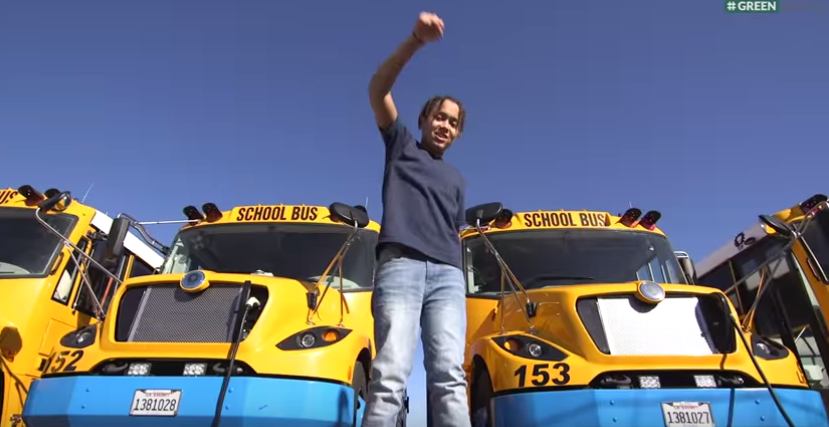Jan 18, 2022
4 Steps to Help Your School Get Electric Buses

Parents and students across the United States are getting more interested in that old standard of the American school experience: the trusty school bus.
School bus technology has changed very little in the last few decades and the buses that students ride today look just like the ones their parents rode to school when disco was king. They may be smelly and loud but school buses are some of the safest vehicles on the road when it comes to protecting kids from driving accidents.
Yet, it turns out that school buses aren’t as safe when it comes to respiratory health, especially if those buses run on dirty diesel fuel, as 95% of America’s 500,000 buses still do. Everybody who gets near the outside of a bus while it’s running or idling will breathe in diesel exhaust. Unfortunately, passengers and drivers inside a diesel bus also are exposed to pollution from exhaust.
Surprisingly, the air inside a school bus can be up to 12 times more polluted than the air outside the bus.
Kids breathing that pollution can lead to impaired brain development, lower test scores, respiratory disease, asthma attacks and even cancer. “Diesel exhaust from school buses is hurting our kids,” according to the American Lung Association.
What’s no surprise is that once parents and students learn about the risks of diesel school buses, that they get concerned. And when they learn that there’s an alternative that’s safer and practical, that parents and students start to ask how long it’s going to take for their school to start adopting clean electric school buses.
For parents and students with an interest in learning about their school’s plans to adopt electric vehicles, showing their support and even helping their school administration find funding to cover the additional costs (an electric bus can cost three times as much as a traditional diesel bus), Green for All, a non-profit group that works to bring clean energy to marginalized communities, has published a free guide to make it easy to get started as part of its #Fuelchange campaign.
Watch the #Fuelchange Anthem music video to see a powerful story of a student athlete with asthma who became an activist for electric school buses:
The Electric School Bus Take Action Toolkit is a resource for parents, students and community members with three powerful goals:
- Help kids, parents, schools, and community members work together to transition dirty diesel school buses to zero-emission electric buses.
- Encourage schools to make a public commitment to buy electric buses, and make a transition towards 100% zero-emission electric school buses.
- Gain more public funding and inclusive financing that’s available to help schools afford the upfront costs of going electric. As a result, schools will the switch at a faster pace.
Green for All and the #FuelChange campaign have focused on empowering marginalized communities because they use school buses the most and suffer the worst health impacts of diesel exhaust. But the #Fuelchange Take Action Toolkit can be used at any school. It’s attractive and easy to follow, guiding a budding school bus advocate through four steps to help their school transition to electric school buses:
- Build a group of local supporters. The more friends and allies you collect, the louder your voice with your school board and administration. To start, you can invite family, friends and neighbors to a #Fuelchange meeting that you organize at your own home or at a public library. Then you can attend the next public meeting of your local school board or start an online petition to gather signatures of EV bus supporters.
- Meet with the bus decision-maker. Call your local school district to identify the key decision maker & set a meeting (either the director of the school bus fleet or private company that provides school bus service on an outsourced basis).
- Learn about your school’s buses and plans. Gather information about your local school bus fleet using the #FuelChange School Worksheet questionnaire that you fill out and then submit to #FuelChange. The worksheet lists about 20 questions to help you gather key information about your school division or district’s current bus fleet, any plans they have to go electric and how they pay for new buses.
- Continue to #FuelChange in your community. Once they receive your filled-out School Worksheet, #FuelChange will send back recommendations on potential funding sources and other info to help your school district get more EV buses.
For more than a decade, Secure Futures has helped schools join the clean energy revolution by making their own solar power. Now we’re working with schools to help them get electric buses and then make it possible for them to charge their new clean buses not off of dirty grid power from their electric utility but from clean solar power right on campus.
If your school is interested in going solar, getting electric buses or doing both — or if you’re a parent or student who think that your school should be interested — then we’re happy to help. We can talk to you about whether your school is a good candidate, how they can get solar power and buses together with no upfront cost, and how to make it happen. Just contact us.
